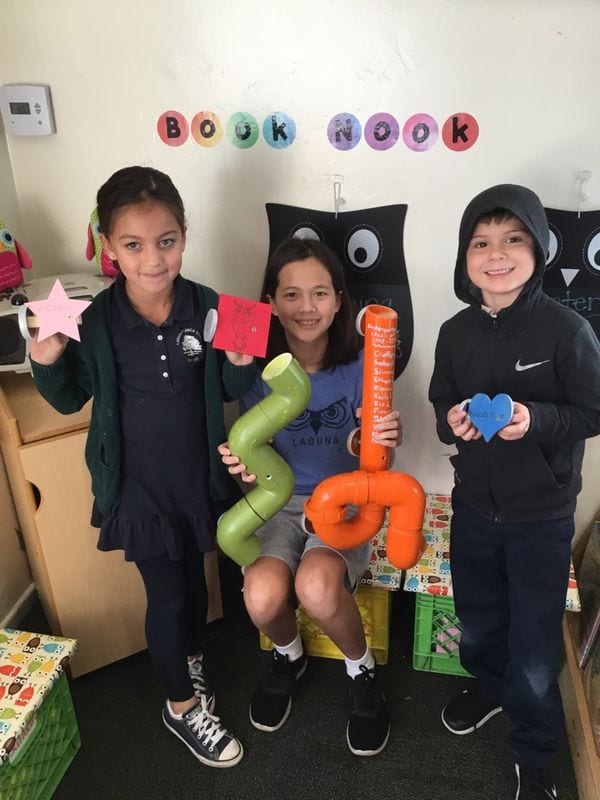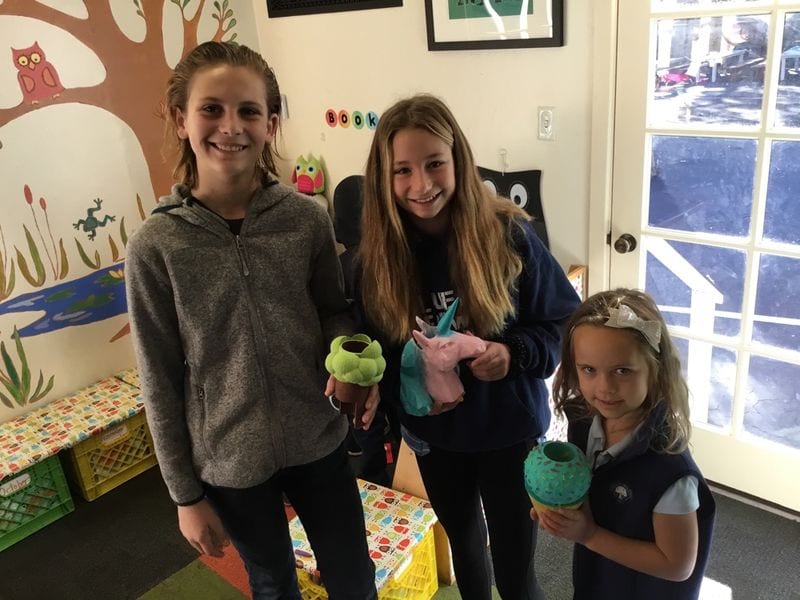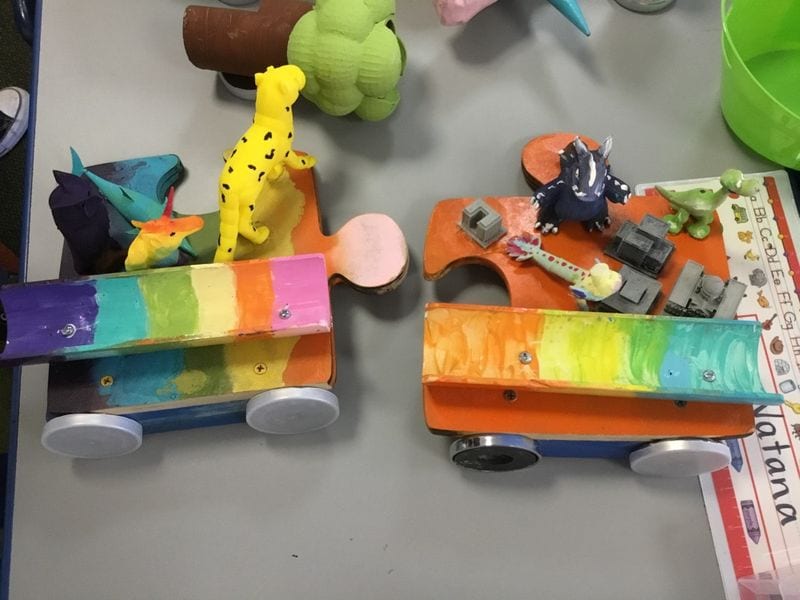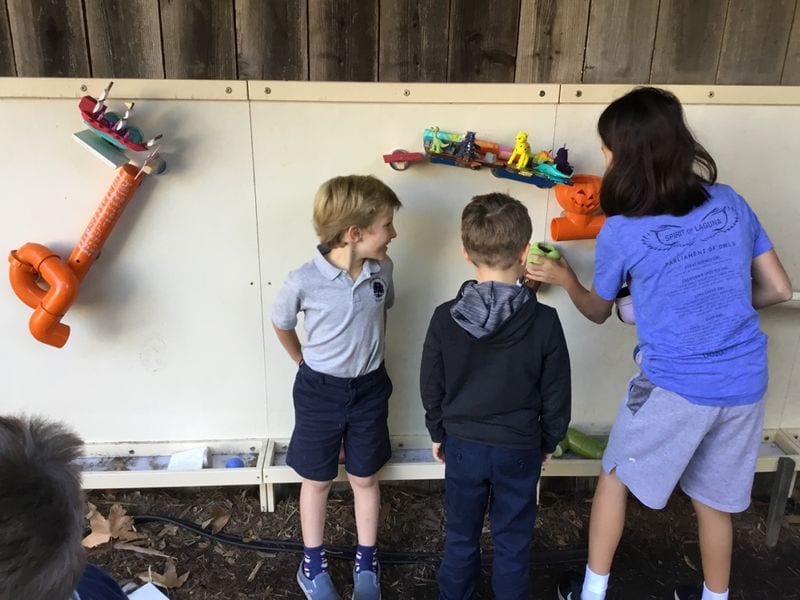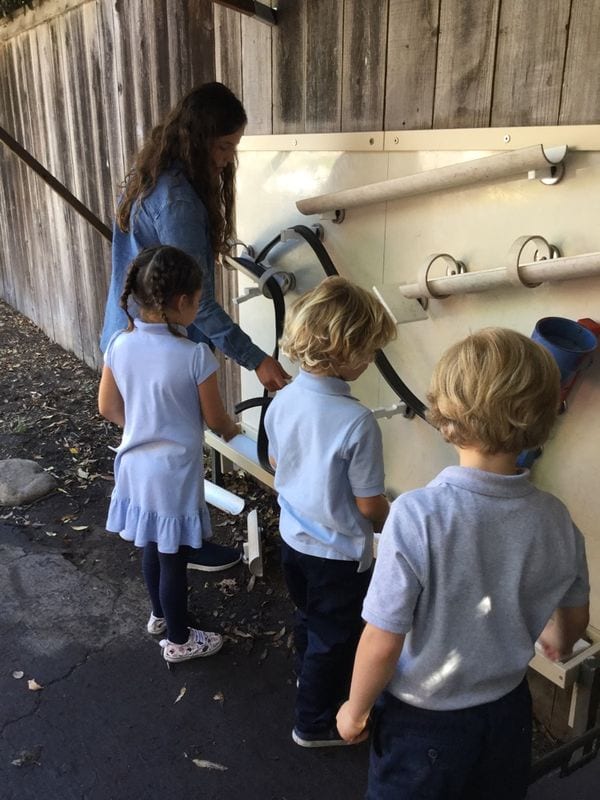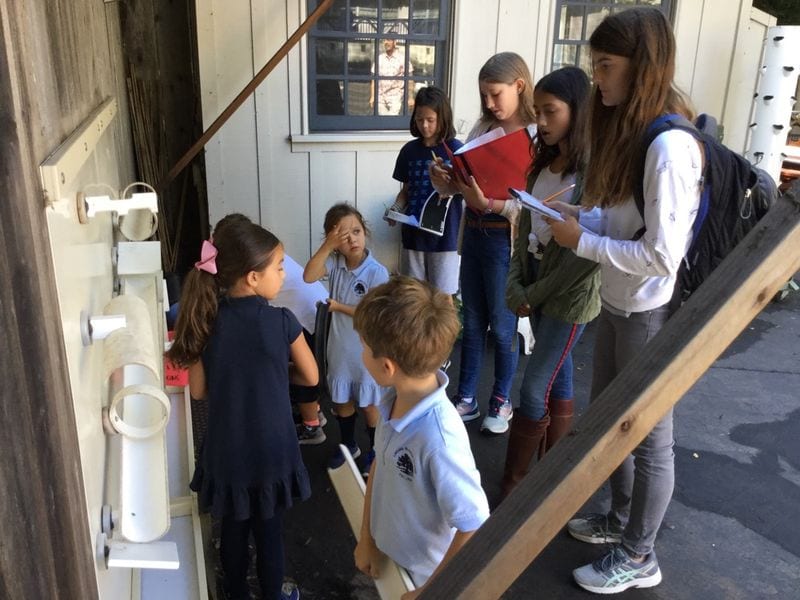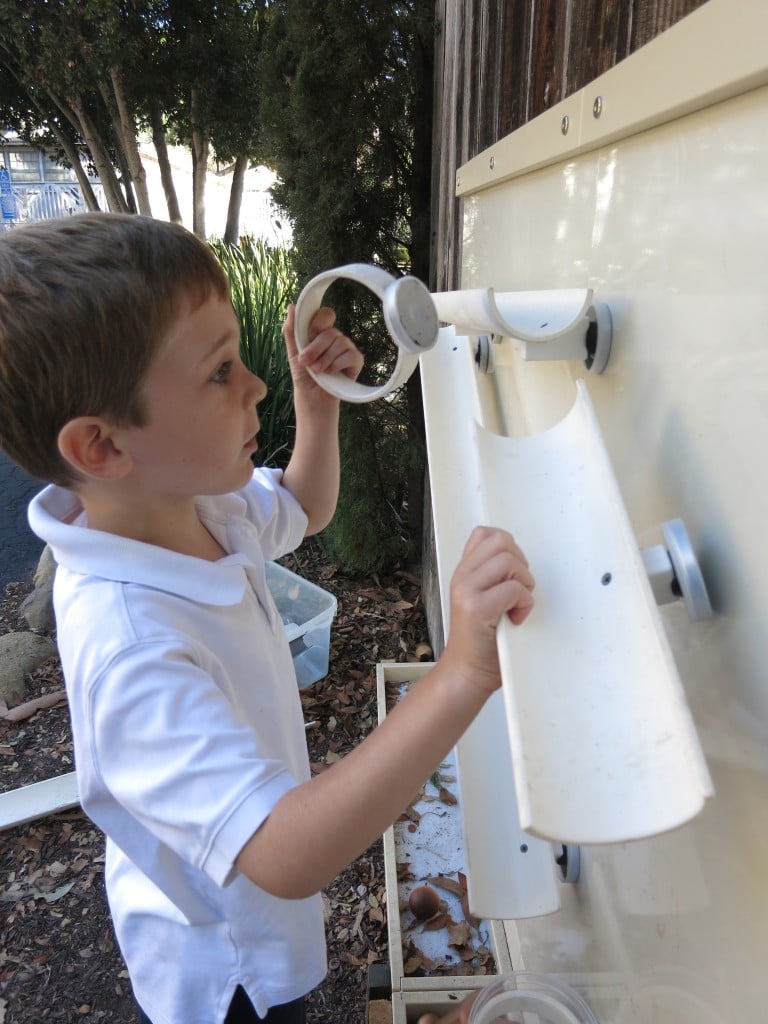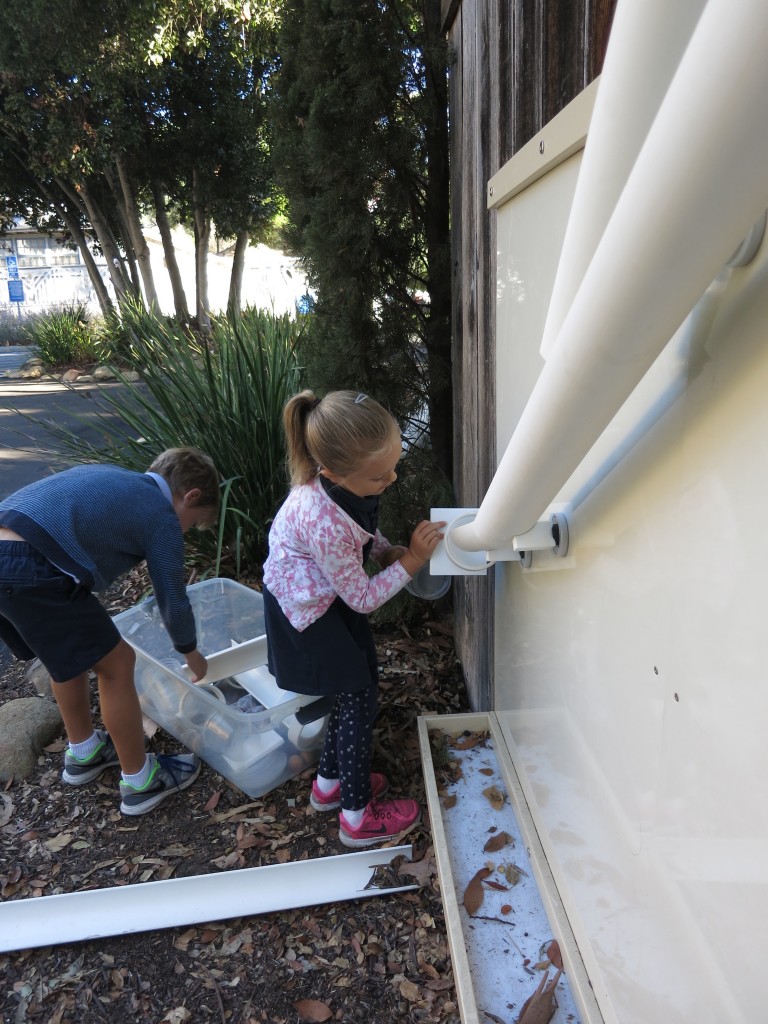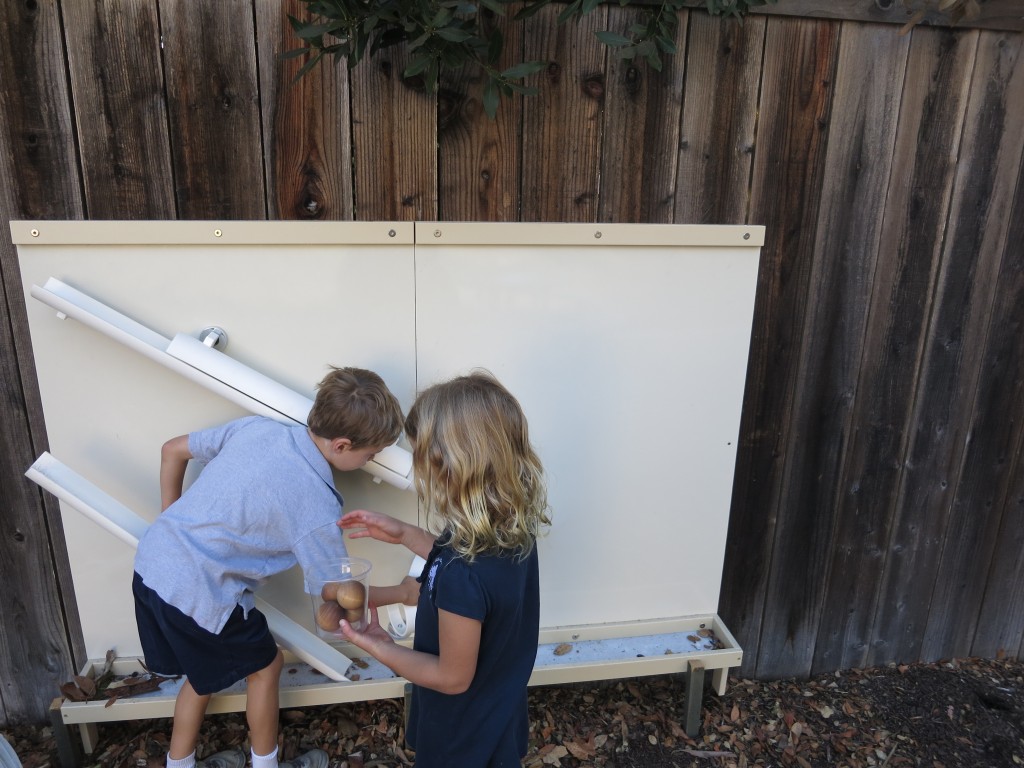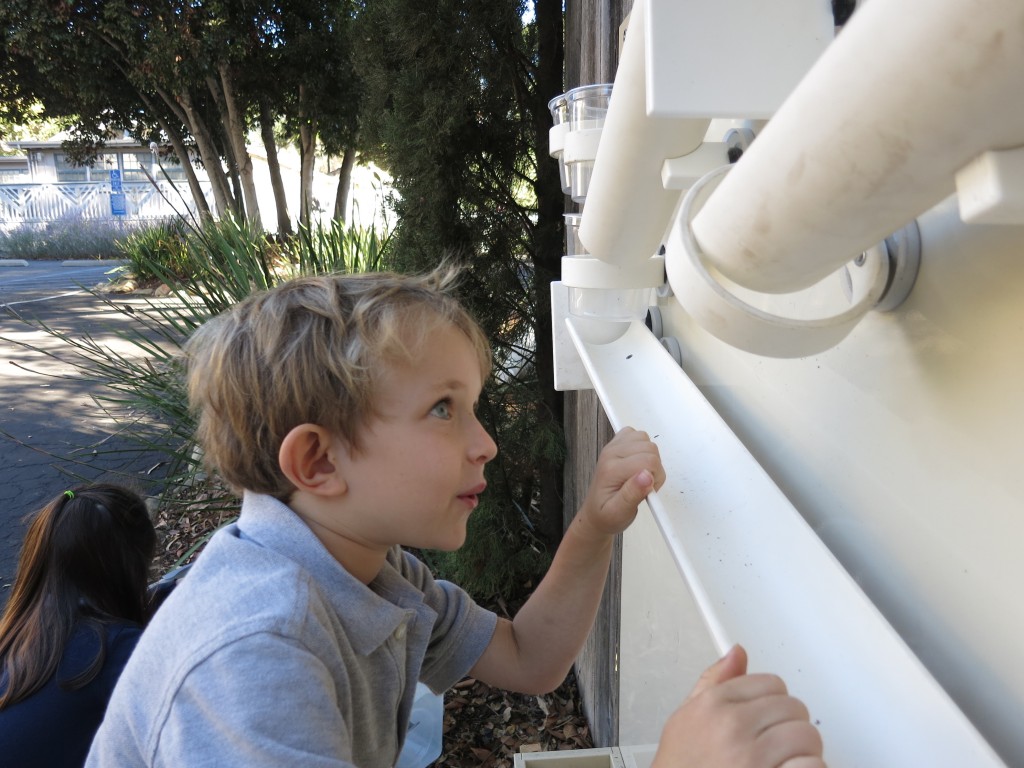A few years ago, our Middle School Engineering instructor and I developed a project-based learning unit that revolved around a newly installed Magnet Wall. If you haven’t seen or heard about Magnet Walls, read on!
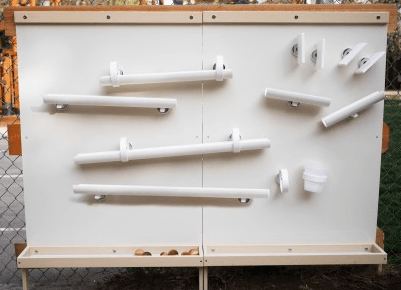
From the Kodo Classroom: (https://kodokids.com/outdoor-magnet-wall)
“The Magnet Wall was developed to provide a hands-on, minds-on, open-ended means for experiencing Newton’s Laws of Motion.
When it comes to motion, Newton’s Three Laws summarize everything you need to know about teaching young children about how things move.
I. Every object in a state of uniform motion tends to remain in that state of motion unless an external force is applied to it.
II. The relationship between an object’s mass m, its acceleration a, and the applied force F is F = ma. Acceleration and force are vectors (as indicated by their symbols being displayed in slant bold font); in this law, the direction of the force vector is the same as the direction of the acceleration vector.
III. For every action, there is an equal and opposite reaction.
In other words…
1. A moving object will keep moving in that direction until something physically pushes on it. So if the ball is rolling down the ramp and collides with something, its motion will change.
2. It takes more force to accelerate massive objects. If you placed a bowling ball on the ramp, its mass would be greater than the force pushing up from the ramp, which would cause the bowling ball to push the ramp down and probably hurt everyone’s feet. So don’t use a bowling ball! If you used a wooden ball on a ramp the forces pushing on the ball, coupled with the mass of the ball would make it move forward. If you used a tiny marble on the ramp, its small mass would cause it to accelerate down the ramp quickly, because it has much less force than the other forces at work.
3. The third law refers to action and reaction pairs. My force is pushing down on the floor as the floor’s force is pushing up on me. So goes the same for the ball. It is pushing down on the ramp, and the ramp is pushing up on it.”
What a fun way for the kindergarteners to explore Newton’s Laws of Motion! In the coming weeks, the kindergarten students will become the clients of the Middle School Intro to Engineering class. The Kindergarteners will pitch an idea for a new piece for the Magnet Wall that our wall is lacking. The Middle School students will then work to create, build, 3D print, etc., this piece. They will also come to find out that kindergarteners change their minds a lot, ultimately sending the MS Engineers back to the drawing board! I can not wait to see what ideas come to fruition!

